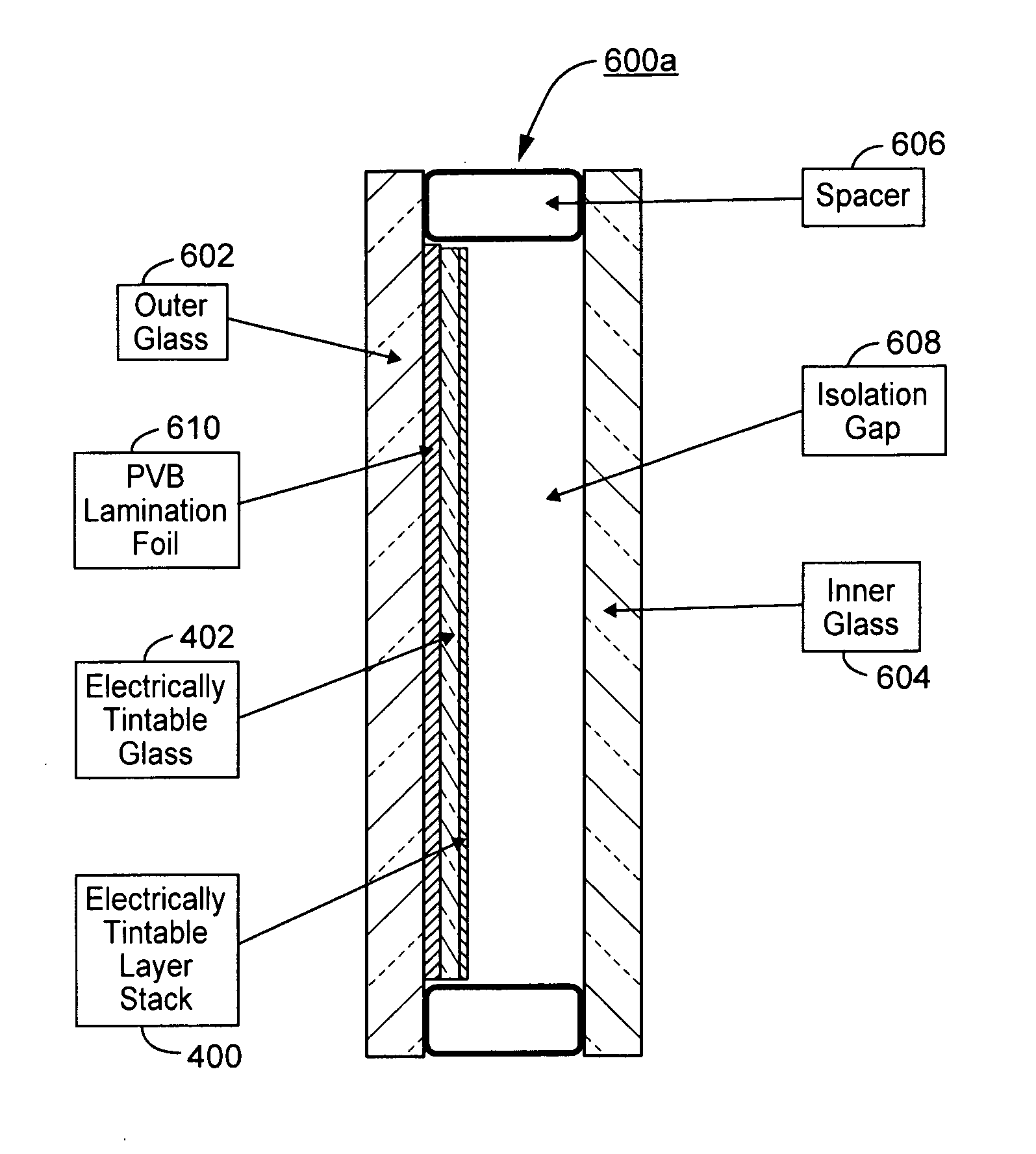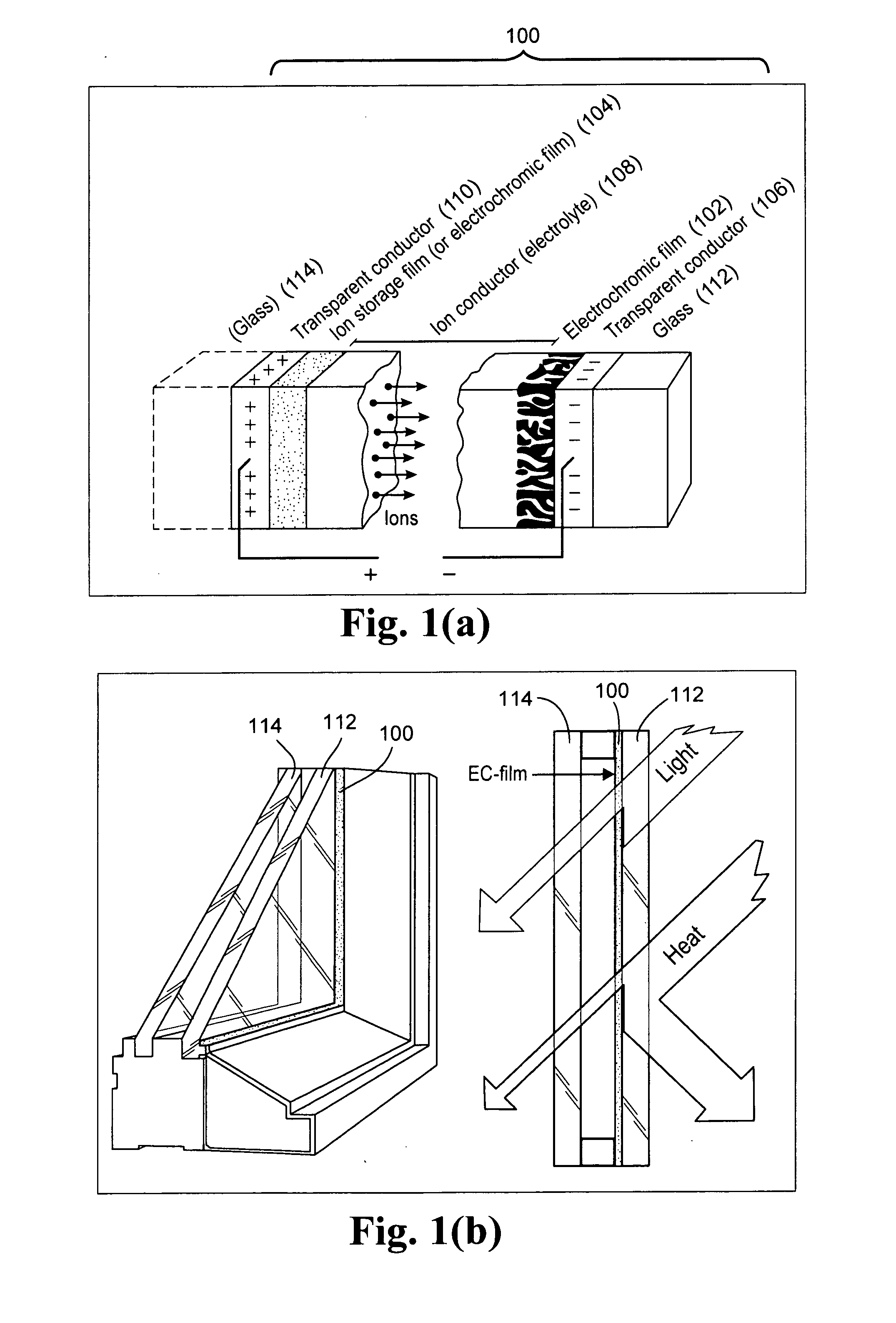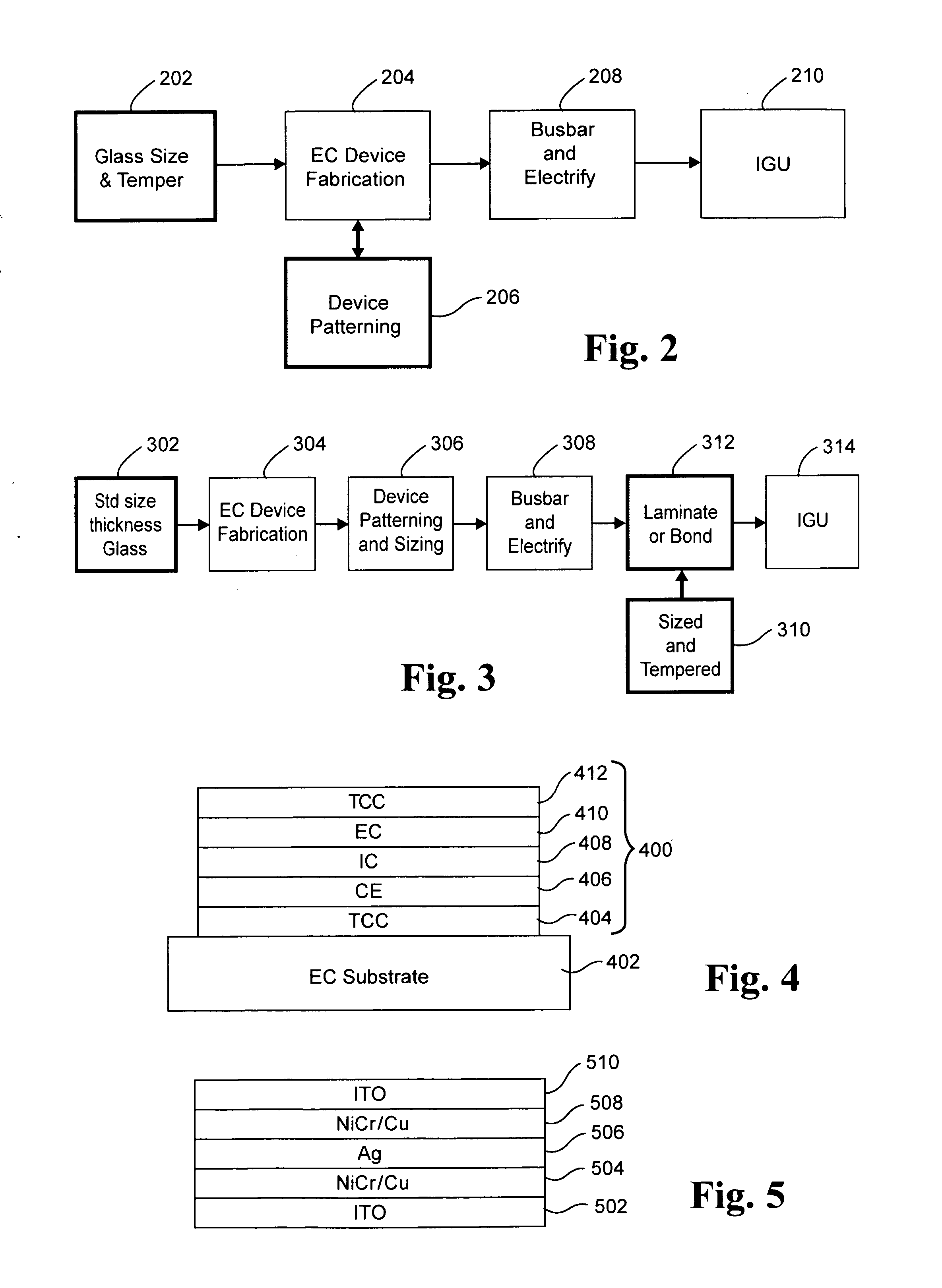Electrochromic devices, assemblies incorporating electrochromic devices, and/or methods of making the same
a technology of electrochromic devices and electrochromic devices, which is applied in the direction of door/window protective devices, instruments, coatings, etc., can solve the problems of excessive heating costs, significant waste of energy, and excessive cooling, and achieve greater solar heat gain control (shgc) delta, improved appearance, and visible transmission
- Summary
- Abstract
- Description
- Claims
- Application Information
AI Technical Summary
Benefits of technology
Problems solved by technology
Method used
Image
Examples
example fabrication
Processes
[0046]FIG. 3 is a block diagram illustrating an ECW fabrication process in accordance with an example embodiment. The FIG. 3 process differs from the FIG. 2 process in several ways, owing to the fact that the FIG. 3 process is designed to provide an EC device on an EC substrate that may be bonded, laminated, or otherwise connected to a temperable substrate. For example, a material such as PVB, EVA, or the like may be used, as may “optibond technology,” which is commercially available from Litemax. The laminate that is used may incorporate a UV blocker (e.g., a UVA blocker). Preferably, a UVA blocker may be included, with Tuv<1%, more preferably <0.75%, and still more preferably <0.5%. The UV blocker may a thin film coating comprising one or more of Bi, BiO, Zn, ZnO, TiO, BiSnO, AgO, Ce, CeO, and / or the like. Alternatively, or in addition, a PET coating may be provided, with a UV blocking material provided thereon and / or therein. For example, an ITO-coated PET layer may be p...
example process
Integration Techniques
[0072]One drawback associated with traditional EC process flows is the need for substrate sizing and tempering before EC device formation, which is related to the fact that post-fabrication tempering will damage the EC device and sizing cannot be performed after tempering. This conventional process flow was illustrated in FIG. 2. In this process, any variation in finished product requirement such as, for example, substrate size, thickness or type, etc., tends to lead to a complex device / layer manufacturing environment. For example, the EC coating process will be fine-tuned to each product separately for optimum results depending on, for example, the substrate size and thickness. For applications such as ECW, with distinct contrast, especially at tinted state, such non-uniformity would be detrimental to the product.
[0073]However, as indicated above (e.g., in connection with FIG. 3), certain example embodiments instead involve lamination, a non-tempered single ty...
PUM
| Property | Measurement | Unit |
|---|---|---|
| Sheet resistance | aaaaa | aaaaa |
| Area | aaaaa | aaaaa |
| Area | aaaaa | aaaaa |
Abstract
Description
Claims
Application Information
 Login to View More
Login to View More - R&D
- Intellectual Property
- Life Sciences
- Materials
- Tech Scout
- Unparalleled Data Quality
- Higher Quality Content
- 60% Fewer Hallucinations
Browse by: Latest US Patents, China's latest patents, Technical Efficacy Thesaurus, Application Domain, Technology Topic, Popular Technical Reports.
© 2025 PatSnap. All rights reserved.Legal|Privacy policy|Modern Slavery Act Transparency Statement|Sitemap|About US| Contact US: help@patsnap.com



